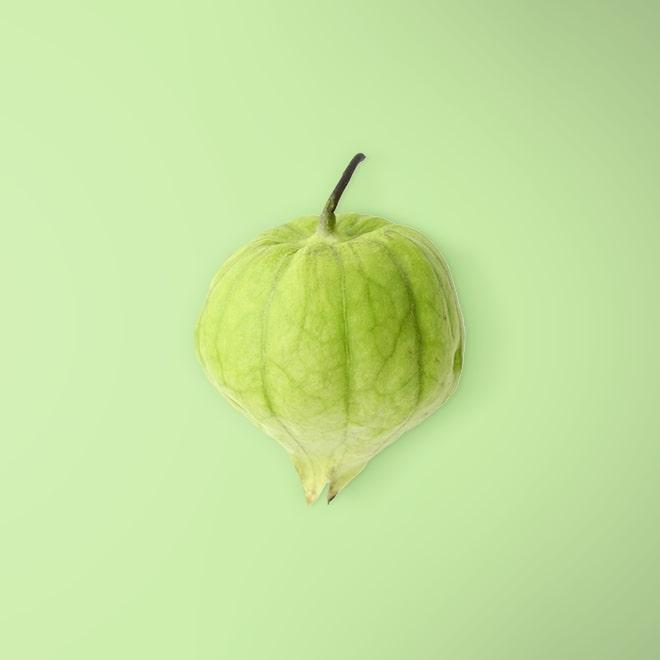Tomatillo




Tomatillos, or Mexican husk tomatoes, are firm tomato-like plants wrapped in a papery husk. Though they do resemble green tomatoes, they merely share the same nightshade family but are completely different plants! They are used regularly in Mexican cooking in both raw and cooked preparations, perhaps most commonly in salsa verde.
Tomatillos originated centuries ago in Mesoamerica and were then taken across the Atlantic to Spain.
The outer skin of the tomatillo is green and firm, while the inner flesh is whiter and meatier than a regular tomato. They grow to maturity inside of a husk, and range in size from about an inch to four inches in diameter. The husk may range from the pale green color of the fruit itself to a light grocery-bag brown.
Select solid, firm tomatillos with smooth, unbroken skins and clean husks.
Ripe tomatillos range in color from green to yellow to purple.
Once the tomatillo reaches ripeness, the husk will have burst open.
Store tomatillos with their husks intact for up to two or three weeks inside a paper bag in the refrigerator.
The sticky residue that coats the skin of the tomatillo underneath the husk forms from natural pectin-like substance found in the plant.
Remove the husks before using as the husks are inedible, and then rinse them thoroughly to remove their natural sticky residue.
No need to peel or seed tomatillos - they can be eaten as is!
Tomatillos can be made into salsa verde, enchilada sauce, or added to soups. Though they can be eaten raw, their flavor deepens significantly when broiled or roasted.
Tomatillos are a great source of niacin, fiber, manganese, and potassium. They have more calories, protein, and fat than tomatoes.
Corrections or improvements? Email us at
content@sidechef.com